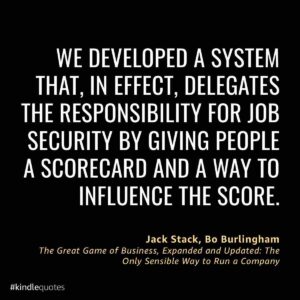Overcoming the challenges left in the wake of the pandemic will take the focus of the entire company. Will everyone do what needs to be done? What will hold them together?
I recently heard a story about an EOS® client in the tech space. The stay at home economy had boosted demand to the point where they needed to hire more tech staff to keep up.
The owner lamented, “our business model has really been tested. It’s tough adding people on the fly and holding them accountable to our standards.”
Bet you wish you had their problem.
In truth, they have a problem and a big one.
Like thousands of others, the company’s clients needed support making the transition to primarily remote service delivery and management. That drove lots of business.
The problem is that these companies were moving remotely because they had to, not because they wanted to. It was a matter of survival. Survival is not the basis of a great long-term client relationship.
Forget the stock market which is being driven by trillions of dollars being pumped in by the Fed. The economy is tanking.
Will those clients be able to pay for those services just delivered when they’re fighting for survival? Much of the revenue they generate is recurring monthly. Will they be able to maintain those monthly payments if their business shrinks?
Orders might be rolling in now. But what happens when the music stops playing, and the silence hits accounts receivable? What then?
Here comes the tsunami
After the wave of new business, this tech company will be left with higher fixed expenses (due to new hires), broken processes (due to doing whatever it takes to respond to emergencies), and lower cash flow and less money in the bank (due to delayed receivables).
So, in short, here’s the company’s upcoming situation:
- Too many employees / higher expenses
- Short on cash
- Sales dropping
- Wobbly clients
 Problems too big for leadership alone
Problems too big for leadership alone
Listening to this story reminded me of one of my favorite books – The Great Game of Business, by Jack Stack and Bo Burlingham. It’s an amazing story of a Missouri company called SRC. It was purchased from a failing conglomerate and was on the brink of failure itself. The problems they had to overcome to survive and thrive remind me of situations faced by thousands of companies across the U.S. right now and in the quarters to come.
The owners and leaders of SRC realized the challenges they faced were bigger than they could solve on their own. So, they honed a system to harness the power of every single person in the organization to overcome the odds.
They did so by empowering everyone to solve problems. They opened the books, shared information freely, and taught everyone how the business operates and makes money.
Then they defined the business objectives. Broke each objective into individual problems to be solved. And created a game around every problem.
What ties it all together? Money…and pride.
SRC created an elaborate bonus structure where bonuses are paid every time a game is ‘won’. They also created a company of owners – establishing an employee stock ownership plan (ESOP) so that every employee can share in the wealth created by the company’s success.
Every victory created pride in the company, and even more importantly, in themselves. And their teammates.
Not too long ago, Forbes reported SRC (now SRC Holdings) had sales of $523 Million and 1600 employees.
That’s quite a game. Maybe you’d like to play, too.
Implementing the GGOB is not for everyone, but it does share some foundational principals familiar to companies Implementing EOS®.
Shared Vision, shared desire. EOS® companies complete a Vision/Traction Organizer (V/TO) that defines who they are (Core Values), what they do and how they do it. (Core Focus). This creates a sense of purpose.
Keeping Score. Leadership team and department-level scorecards do exactly that, keep score. Everyone can objectively see if the company is on track a/ka/a ‘winning.’
Everyone knows how they contribute to the company’s success. The Accountability Chart and individual measurables clearly communicate each person’s role and accountabilities in helping the company achieve its goals
Dependence on the team. Multiple EOS® tools including the Accountability Chart, Scorecard, IDS sessions, process documents, and the Company’s Proven Process graphic clearly demonstrate that every component of the business must be strong for the entire organization to succeed.
Open and honest communication. In formal meetings (like a Level 10) and less formal business interactions (like on-the-fly coaching) – EOS® strongly encourages an open and honest environment. Open in that people are willing to hear each other. And honest, in that people just give their unfiltered opinions (within professional boundaries of course.). Open and honest leads to a free exchange of information and productive issue solving.
90-day world. The GGOB includes succinct 90-day plans. Similarly, companies running on EOS® set 90-day rocks wherein their accomplishment keeps the company on track towards achieving its 1-year goals.
The Key Question
When the tsunami arrives (if it hasn’t already), will you be able to harness the creativity, commitment, and problem-solving power of every member of your organization?
We can help.
Free Issues Solving Session
As long as the current environment persists, we will facilitate a free Issues Solving Session to help you clearly think through issues. That will allow you to formulate and attack a plan of action. Please contact us to set up your session.
Also, keep an eye out for the next Fight and Thrive Zoom sessions. Our first two sessions were well received, and the next ones will also be open to owners and leaders of small businesses. The format will be simple. Prepare your issues list, and then join the session to brainstorm up some solutions.
About Grow Exceptional
Grow Exceptional works with leadership teams to help get their businesses “unstuck” by implementing and teaching the widely adopted Entrepreneurial Operating System (EOS®).
